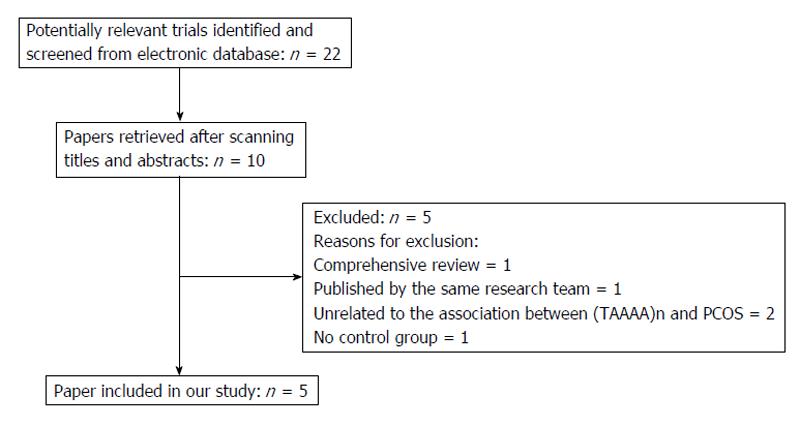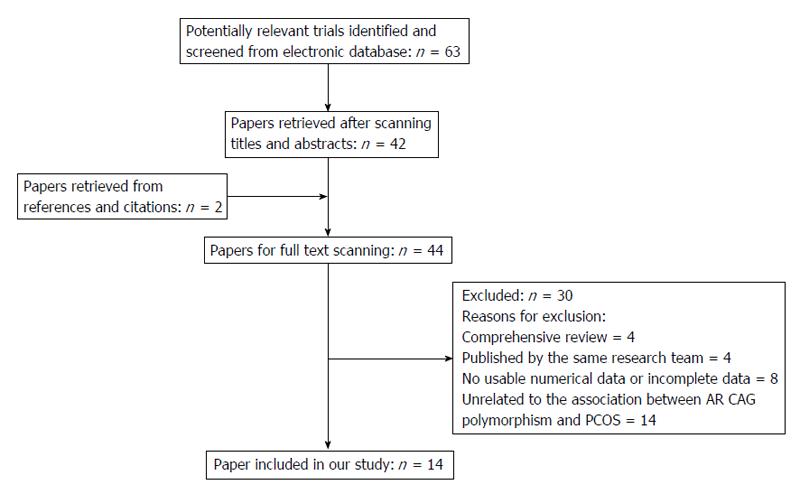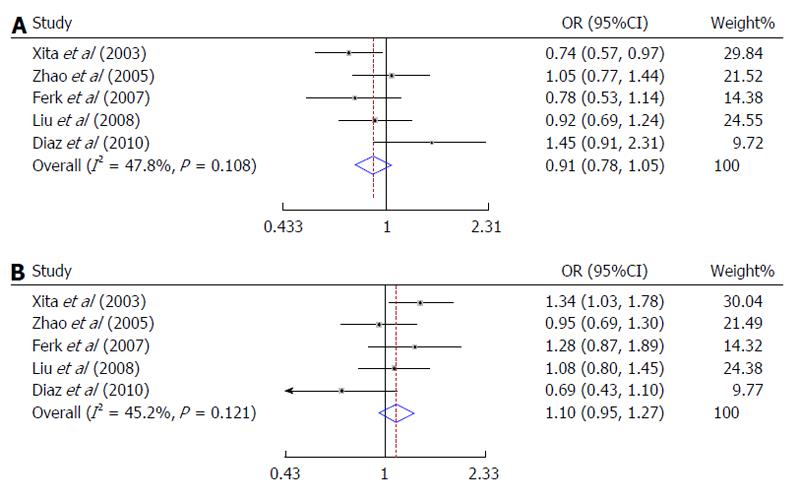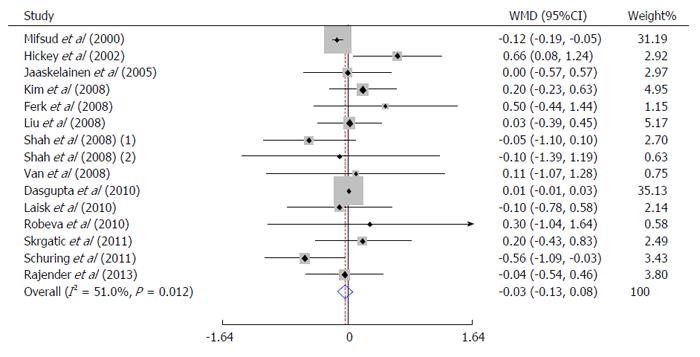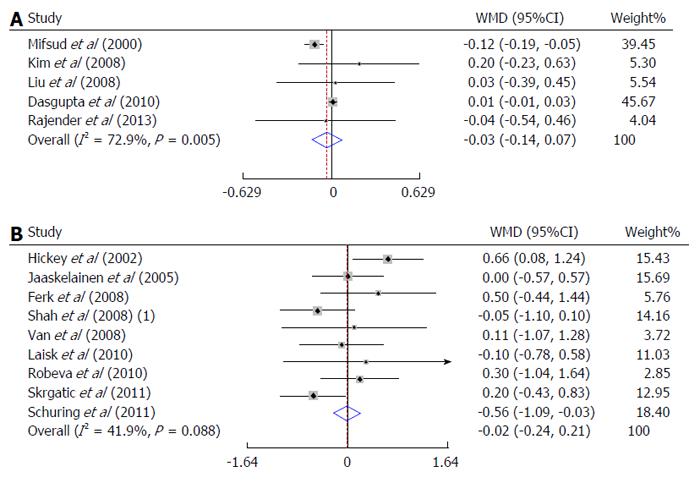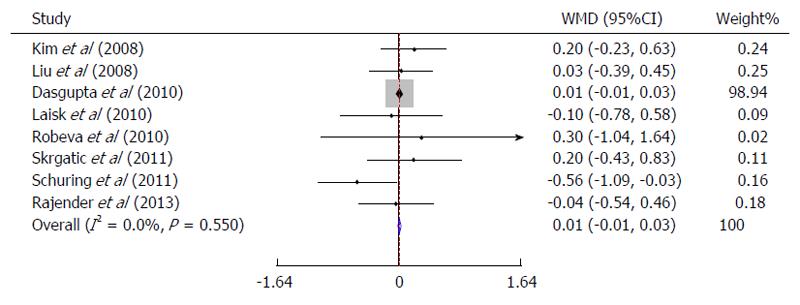Copyright
©The Author(s) 2015.
World J Meta-Anal. Feb 26, 2015; 3(1): 72-81
Published online Feb 26, 2015. doi: 10.13105/wjma.v3.i1.72
Published online Feb 26, 2015. doi: 10.13105/wjma.v3.i1.72
Figure 1 Strategy for searching studies concerning the association between the (TAAAA)n sex hormone-binding globulin polymorphism and polycystic ovarian syndrome risk.
PCOS: Polycystic ovarian syndrome.
Figure 2 Strategy for searching studies concerning the association between the (CAG)n androgen receptor polymorphisms and polycystic ovarian syndrome risk.
AR: Androgen receptor; PCOS: Polycystic ovarian syndrome.
Figure 3 Association between polycystic ovarian syndrome risk and (TAAAA)n sex hormone-binding globulin alleles.
A: Comparison of short alleles in the PCOS group with those in the control group; B: Comparison of long alleles in the PCOS group with those in the control group. PCOS: Polycystic ovarian syndrome.
Figure 4 Association between polycystic ovarian syndrome risk and (TAAAA)n sex hormone-binding globulin genotypes.
A-C: Comparison of short-short (A), short-long (B), long-long (C) genotype in the PCOS group with those in the control group. PCOS: Polycystic ovarian syndrome.
Figure 5 Association between polycystic ovarian syndrome risk and (CAG)n repeats in androgen receptor in all selected studies.
WMD: Weighted mean difference.
Figure 6 Association between polycystic ovarian syndrome risk and (CAG)n repeats in polycystic ovarian syndrome by race.
A: Asian; B: Caucasian. WMD: Weighted mean difference.
Figure 7 Association between polycystic ovarian syndrome diagnosed according to the criteria of Rotterdam Revised 2003 and (CAG)n repeats in androgen receptor.
WMD: Weighted mean difference.
- Citation: Jin JW, Chen SL, Deng ZT. Association between SHBG (TAAAA)n and AR (CAG)n polymorphisms and PCOS risk: A meta-analysis. World J Meta-Anal 2015; 3(1): 72-81
- URL: https://www.wjgnet.com/2308-3840/full/v3/i1/72.htm
- DOI: https://dx.doi.org/10.13105/wjma.v3.i1.72









